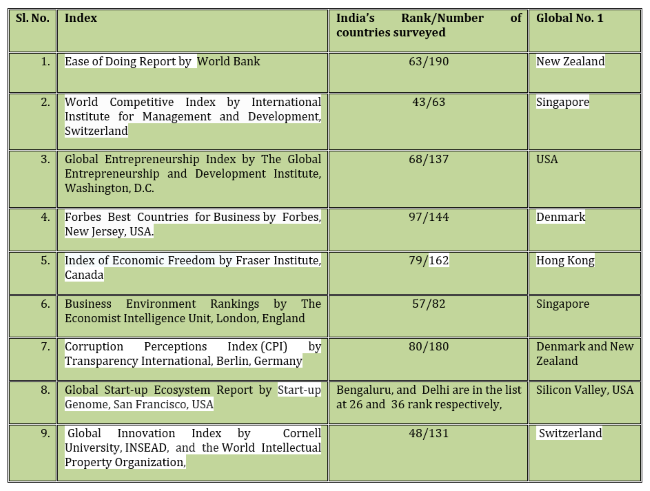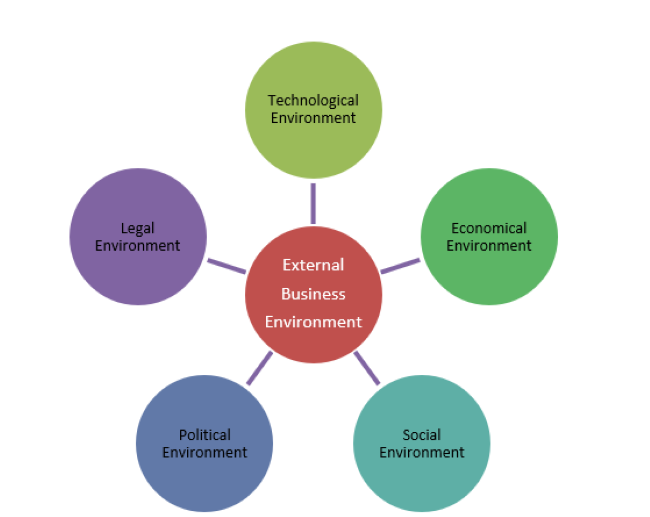
The World Bank Group issued a press release in August 2020 conveying that several irregularities have been reported regarding the changes to the data in the Doing Business 2018 and 2020 reports, and the changes in the data were inconsistent with the methodology. Accordingly, it is temporarily pausing the publication of its well-known Doing Business ranking report as an investigation is being conducted to examine data irregularities. The World Bank (WB) confirmed that it will act based on the findings and will retrospectively correct the data of countries that were most affected by the irregularity. This is not the first time that the World Bank’s EoDB report has run into controversy. Earlier, in 2015, the Bank’s former chief economist Paul Romer alleged that Chile’s decline in the World Bank’s rankings in 2015 was due to methodological changes rather than a deterioration of the country’s business environment. Romer who had to step down from his position alleged that it might have been the result of the World Bank staff’s political motivations.
Launched in the year 2003, the World Bank’s Ease of Doing Business Report (EoDB) ranking is an assessment of business regulations across 190 economies. The annual report receives wide coverage by the media and the private corporations across the world. Even politically, an improvement in the ranking of a nation is projected by the national governments as a major economic achievement. Though the evaluation by the World Bank is not the only one published to indicate relative openness of the business environment in economies, the annual EoDB ranking is often cited as the most authentic indicator of the regulatory environment for business operations.
READ I Ease of doing business: Why World Bank should exit ranking efforts | Policy Circle
Business Environment Indices
Setting up and operating a business entity at a new place is always a challenging task, and it is a requisite to understand the factors that can influence the success or failure of the proposed business activity at the new location. Some of the reports prepared periodically by reputed global institutions to provide guidance to entrepreneurs, are mentioned below.

The importance of business environment analysis
In modern times, the role of the private sector in the economic growth of any nation cannot be underestimated. The growth of businesses in any economy provides support to governments in addressing and overcoming economic challenges faced by the society like job creation and financial resources generation, and in improving the standard of living of the citizens. The interdependence of the business and the government gets elucidated by the fact that the growth of a business is affected by many external factors including those under the control of the government. Internal factors of a business entity do play a vital role in its performance, but the external elements are studied under various surveys because these factors are beyond the control of the organisation.
The importance of various business rankings has grown over the years as these have become important indicators for companies choosing countries to invest. Generally, another set of external factors covering the natural physical environment like climate, natural resources, or natural disaster proneness are kept out of the purview while assessing the business environment of a place. Accordingly, the factors studied for assessment and ranking purpose are those which emerges from political set up, economic policy, socio-cultural values, technological level, and legal system. No doubt, the significance of each factor to companies varies, depending on the activity of the business.

From a government’s perspective, analysing the business environment is crucial to develop effective policies to achieve economic goals. On the other hand, businesses get a strategic analysis done by consultants to understand the dynamics of the business environment and strategise to achieve their objectives.
READ I Why Narendra Modi govt must address farmers’ fears
Most of these rankings were initiated around the dawn of the millennium. It was the time when the implementation of WTO norms began, and many Third World nations opened up their market for global investors. Increasing incomes in developing countries coupled with liberalised policy opened up market opportunities for large global companies operating across sectors. Low wages in the developing world offered an attractive option for MNCs to base their manufacturing and services operations in such locations for greater competitiveness. Developing countries too benefitted with increased employment opportunities and enhanced earnings for the local population. It came to be realised that the policies that make an economy open to trade and investment are basic to sustained economic growth. Thus, red carpets were laid for global companies by various governments through investor-friendly policies. Potential investors indeed examine many factors, such as the overall quality of an economy’s business environment, the financial system, market size, rule of law, and the quality of the labour force before investing, however, these index tools gave them a good insight into country’s regulatory environment. The EoDB ranking received relatively higher acclamation from media, businesses, and governments as it came from the World Bank.
India and Brazil: Two case studies
From a government’s perspective, analyzing the business environment factors is crucial to develop effective policies to reach the economic goals. On the other hand, businesses get a strategic analysis done by consultants to understand the business environment’s dynamics and strategise planning to achieve their objectives.
Most of these ranking exercises were initiated around the change of the millennium. It was the time when the implementation of WTO norms began, and many third world nations opened up their market for global investors. Increasing incomes in developing countries coupled with liberalized policy opened up market opportunities for large global companies operating across sectors. Low wages in the third world offered an attractive option for MNCs to base their manufacturing and service operations in such places. The EoDB report suggests a relationship between reform measures and GDP growth, and thus, advocates liberal policies linking the expansion in national income with better employment opportunities, higher government tax revenues, and improved personal incomes. Anatomising the positive movement in India’s EoDB ranking since 2014, one will notice substantial progress in the ranking in getting credit, electricity connection, paying taxes, and resolving insolvency. Thanks to technology, online submission of documents and approval process have made the procedures simpler, less time taking, reducing interface of businesses and authorities.
READ I e-commerce policy must focus on investment, infrastructure
Comparing the jump in the ranking by India from 142 to 63 during 2014-19, with the corresponding economic indicators would be interesting. During 2014-19, GDP growth averaged 7.5%, which was the highest among G-20 countries, FDI inflows increased from $45.1 billion to $74.3 billion in 2019-20, and GDP per capita increased from $1574 to $2103, an increase of 33%. Impressive, and also supports the World Bank hypothesis. Now, go back to the period 2005-10. The GDP per capita income increased from $715 to $1358, FDI inflows substantially from $6.05 billion to $37.7 billion, and growth in GDP remained in a healthy range (5-10%) despite the great recession of 2008-09. (Data Source: World Bank, dpiit.gov.in) However, the World Bank’s EoDB ranking for India was almost static in the range of 116-134. The subsequent period of 2010-15 also followed a similar pattern. Now, consider the case of Brazil, a somewhat equivalent economy, though much smaller in population. Brazil was ranked 124th out of 190 countries in the Doing Business report 2020. It has never been ranked below 100 since the inception of the EoDB ranking. The growth pattern of Brazil has not been healthy since achieving a 7.5% growth in 2010.
According to the ‘World Investment Report’ published by UNCTAD, FDI into Brazil boomed after 2009 reaching $102 billion in 2011, and despite facing a severe downturn in the economy since 2015, Brazil received $72 billion as FDI in 2019, 9th highest in the world. The per capita income currently is around $8,717 down from $13,246 and $12,113 in 2011 and 2014 respectively, a result of the recession in 2015 (Source: World Bank). The World Bank identifies the infrastructure deficiency, a complex tax system; excessive regulation, and an uncompetitive economy with a low degree of innovation as the causes for low ranking, and poor growth patterns. Not only in EoDB ranking, but Brazil is also placed well below India under almost all rankings for business environment conducted by other agencies as well. The Latin American nation witnessed political unrest, violent protests, corruption scandals, political instability, and the alleged abuse of human rights by law enforcing agencies, and severe recession in the preceding decade. Nevertheless, it continues to be a preferred choice for global investors. Brazil’s strength in abundant availability of renewable and non-renewable resources of power, a huge reserve of raw materials, good manufacturing base, skilled labour force, sizable middle-class population, proximity to big markets in North and South America, could overcome the other negative sentiments, and attract investors. Incidentally, many of these factors are not included in the methodology followed for EoDB ranking.
READ I India’s retail sector: Overcoming policy and structural challenges
The Way Forward
- It is laudable that India’s position has now moved upwards in the ranking to 63 from a pathetic position of 142 in the last six years. Of an economy of India’s size and potential, the current position is certainly not satisfactory. Pre-Covid, India was the fastest-growing trillion-dollar economy in the world. If we look at the ranking of the top 10 world economies, except Brazil, all other countries are ahead of India in the ranking.
- The index is based on data of two jurisdictions, Delhi and Mumbai only, to gauge the overall national business environment. No doubt, there has been a paradigm shift in the approach towards governance as the government has unveiled a multitude of reforms aimed at improving the business climate in India. However, the government needs to concentrate more on weak areas as identified by the WB.
- Experts question the methodology of giving equal weight to each parameter, e.g., the reasonableness of equating “getting electricity connection” with “enforcing a contract” or “resolving insolvency”. Critics have also pointed out that the Doing Business indicator is more focused on laws, procedure, the time required, and the cost incurred in the process, and not on the appropriateness of the policy, its relevance in the local context, or the implementation. The World Bank team can take a clue from the Government of India’s process of ranking States under the Business Reform Action Plan(BRAP) started in 2015 which encourages States to undertake steps to minimize the regulatory burden, improve transparency, and introduce an element of healthy competition. In the BRAP 2019, an additional element of user feedback was introduced to assess the ground level effect of the specific reform undertaken. The novel feedback system introduced adds credibility to the survey, and also provides transparency/accuracy in the process. It would be a good idea if the World Bank adopts the user feedback process in its methodology for the EoDB ranking for any new reform undertaken/claimed by the host country.
- Overall business environment of any geographical entity is a combination of political, legal, and economic setup, and is also influenced by infrastructure and institutions. The EoDB ranking by WB is broadly based on an assessment of business regulations and their enforcement on ten parameters, and the methodology does not weigh the importance of other factors like the size of the domestic market, the quality of human capital, policy predictability, red tape, or the incidence of corruption, the quality of the labour force, and like which contributes substantially in creating the business environment. Thus, for assessing a comprehensive view on the business environment of any country, the inclusion of other factors evaluated under the World Competitive Index, Global Entrepreneurship Index, and Global Innovation Index is considered crucial, especially for agencies tasked with the job of preparing the road map for nation’s economic growth.
- The recent report about irregularities in WB’s ranking exercise is disturbing, which raises questions about the organisation’s credibility. But it hurts those countries most which have carried out genuine reforms in their business processes.
(Krishna Kumar Sinha is an industrial policy and FDI expert based in New Delhi. His last assignment was as an industrial adviser in the department of industrial policy and promotion, DIPP, currently known as DPIIT, under the ministry of commerce and industry of the government of India.)
Krishna Kumar Sinha is an industrial policy and FDI expert based in New Delhi. His last assignment was as an industrial adviser in the department of industrial policy and promotion, DIPP, currently known as DPIIT, under the ministry of commerce and industry of the government of India.


